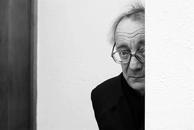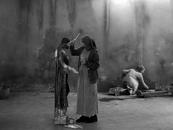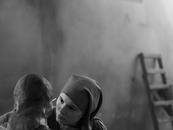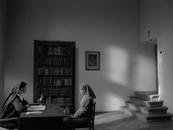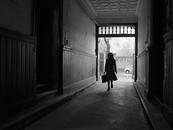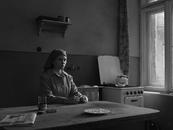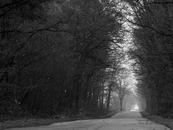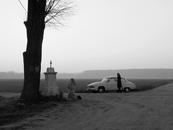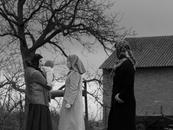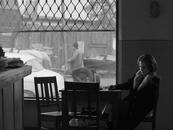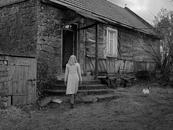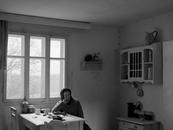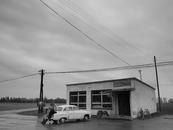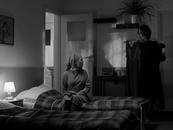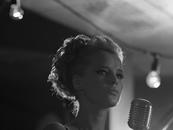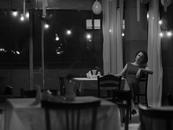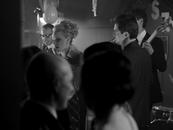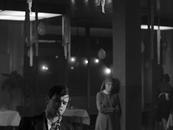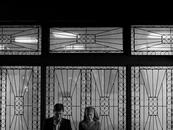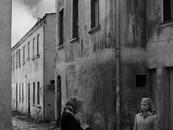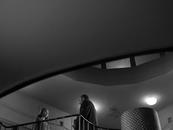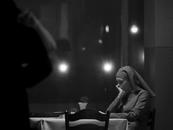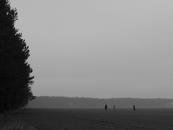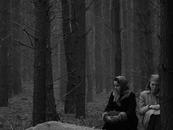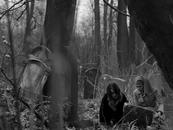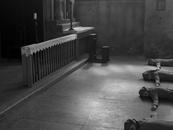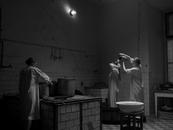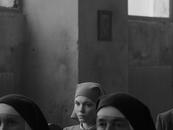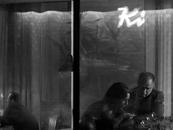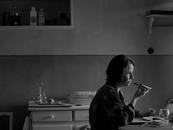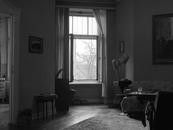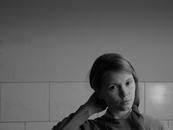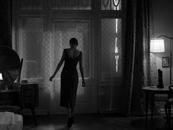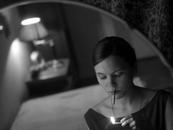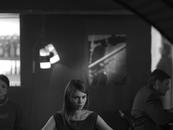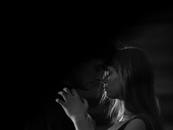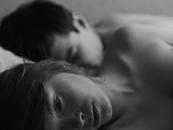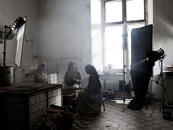And then?
This is normally the time of the year when we are busy working on the promotional videos (brand or product) to be presented at the late-summer industry fairs on behalf of some of our clients. Therefore I am accustomed to taking notes on the videos that most impressed me during the previous year; the idea is not so much to get ideas in terms of content, but to use the videos as a stimulus for certain technical and formal solutions. Sometimes it is the use of a color change in post-production, other times a particular rhythm of the assembly, or even the setting of titles and overlays. This year the list of notable video is almost non-existent. No clips, no ads, no short films or feature films did I find to contain glimmers of anything new or remarkable, except for an unexpected, and confusing, Polish film of 2013.
"Who goes to see a Polish movie in black and white set in the early 60s about a novice and her aunt? A spectator (masochist) in a thousand, probably." This is how the shrewd journalist Massimo Bertarelli introduced his review of the film in the Italian newspaper “Il Giornale.” In fact the plot of Ida, the lapidary title of the infamous film, is a bit repugnant. Poland, 1962. Eighteen year-old Anna, an orphan raised in a convent, has decided to become a nun. However, shortly before taking her vows, prompted by the Sister Superior, she pays a visit to her only living relative, Wanda, her mother's sister. Along with Wanda, Anna will face a journey of self-discovery about her past. She finds out that she is Jewish, her real name is Ida and her aunt is former communist public minister, responsible for numerous executions. While Anna goes in search of the tragic truth about her family, Wanda must also deal with the decisions made during the war, that still haunt her. The history, the great and terrible history of 1900s, is the backdrop to their initiatory journey.
I admit that the first time I say the film, casually one night, I paid more attention the how the scenes were constructed, rather than to both the plot and the intertwining lives of the characters. From a certain point on, I was literally overpowered, immersed in the slow rhythm by an ever fixed camera, by the spasmodic care and neoclassical elegance of every single shot, from the use of light as if it were paint on canvas, from the refined musical choices, eclectic and perfectly inserted in the story (Mozart and Bach but also Buscaglione and Celentano), the depth of field and the purity of a black and white capable of exploiting the full range of grays. I was struck, above all, by a formal rigor that never appears pretentious. Never once was an image presented as an end in itself but always in context, adhering to the places and people it is intended to describe, in a harmony so perfect that it never felt like it interrupted the dialogues or long silences. And, not to mention, all without ever being weighed down by self-aggrandizing metaphors and symbols, typical of a certain type of films by cinema-festival directors. Even the almost square format (1: 1.33), which I normally consider a serious limitation (our view is panoramic), seemed to fit the film perfectly, managing to capture the most of a visual structure that deserves not to be lost at the edges. I stopped the movie several times to freeze on individual frames. In the photo gallery of the home page of the Helvetika website, I have included a number of these frames. They could easily be mistaken for a series of photos from a photo shoot, the work of an artist of the post-war period (equipped with optical bench and an analogue camera, of course).
I said that the first time I watched the film I didn’t pay much attention to the characters and the plot. Actually I didn’t pay attention to the characters because they were the ones to pay attention to me. The two protagonists didn’t seem to be human beings, but rather real feelings. Two very strong feelings, different and independent but in a dialectical relationship, dynamic and potentially unstable. The journey of discovery was not transmitted by their movements or by the camera (which was immobile, frozen), but by their looks: the young girl was very active and suspicious, while her aunt was fixed and indifferent (especially in relation to the suicide, punctuated by the sweet notes of Mozart, which has something desirable about it described that way).
So then came the final, decisive part of the film. The girl, returning from her trip, about to take her vows is seized by doubt and renunciation. She returns for her aunt’s funeral. The following evening she decides not to become a nun, letting her hair loose and putting on an elegant dress she selects from her aunt’s closet. She dances barefoot with the young, handsome saxophone player she met during the journey and finally allows herself - perhaps mindful of a dialogue in which she told her aunt that she had never had carnal thoughts, while her aunt responds that maybe she should have had those kings of thoughts and should experiment with sin before taking her vows ("Otherwise, what would be your sacrifice?"). The brief dialogue that follows the sex scene, a scene filmed with priceless grace, opens a window onto another life, a very different life from the one she lived at the beginning of the film in the repetitive and monotonous rhythm of the convent where she had been since she was an infant. The saxophonist asks her to come with him to Gdansk, where her would be performing the next day. Staring into his eyes with a pure and charming look, she asks: "What next?" Gently he explains that they would move in together, get a dog, buy a house, get married and have children. But she insisted: "And then?"
"And then there will be problems." I don’t know how to interpret his tone of voice, if he is joking or is serious: the camera captures her face and his back. At dawn, Anna-Ida rises in silence while the boy was still asleep. She dresses as a nun again, picks up her suitcase and exits. Here the camera follows her, adjusting to her steps, for the moving for the first time with a lateral cart, then moves to the front. This dual camera movement I think is the only visual symbol used by the director: the symbol of a choice, of a journey towards something specific, the result of strong and informed decisions. And when she, more beautiful and strong than ever, is shot face-on , you sense the touch of class that cloaked the work of a purely theological sense, that delves into the meaning of life. From the early morning silence, you can can hear the sound of "Ich ruf 'zu dir, Herr Jesu Christ" (I invoke, the Lord Jesus Christ) by Johann Sebastian Bach rewritten by Ferruccio Busoni for piano, played by a young Alfred Brendel. The music does not accompany the choice of the protagonist, "it is" her choice. That music "is" the secluded and modest life that she is going to face forever, it "is" the beauty that can transform the banality of the world (life is wasteful, confusing forgetfulness) into poetry. That music gives meaning to her "And then?"
And with regards to the dialogue between the two lovers-for-a-night, which I find the most meaningful in the history of cinema (at least in "my" history of film): I have always believed, perhaps wrongly, that philosophy suggests with bold impudence that we ask "Why?", while science is limited to asking "How?” and that religion has the audacity to ask, "And then?". It’s possible that we are unable to seriously ask, "And then?" (I am perfectly incapable) but it is hard not to admire the question, which can be processed only in the flash of a piece of music of unearthly beauty.
There was a moment the first time I watched the movie in which I was afraid of not being able to comprehend such different and special images full of so much beauty. For a moment, a moment of weakness, I thought: "This film is too slow." Shortly after, in front of an overly harmonious image, I thought, "Okay, but this guy (the director, Pawel Pawlikowski) is too full of himself.” There is a form of ignorance that I think arises around an excess of information, as you can become blind due to an excess of images and deaf due to an excess of noise. You may end up not seeing something precisely because you have seen too much. Bombarded by advertising in which things and affections are confused with their representation, perhaps we end up avoiding real beauty because we find it too slow, too harmonious, too deep. Too good, in fact. I miss the mystique of ordinary things, of dilated time, the deep breath. With all the images that pass under our noses, we can no longer pause to observe the details of just one. At the very least we observe a bit of everything due to our state of frenzy. We are overwhelmed by "synthetic vision."
I therefore invite you to watch this movie, even as a visual exercise in hopes that you will pick up on of that particular rhythm on which rests the structure of a work that is a small masterpiece that helps to better define the meaning of one of our existential questions.
24/03/2016 Filippo Maglione

